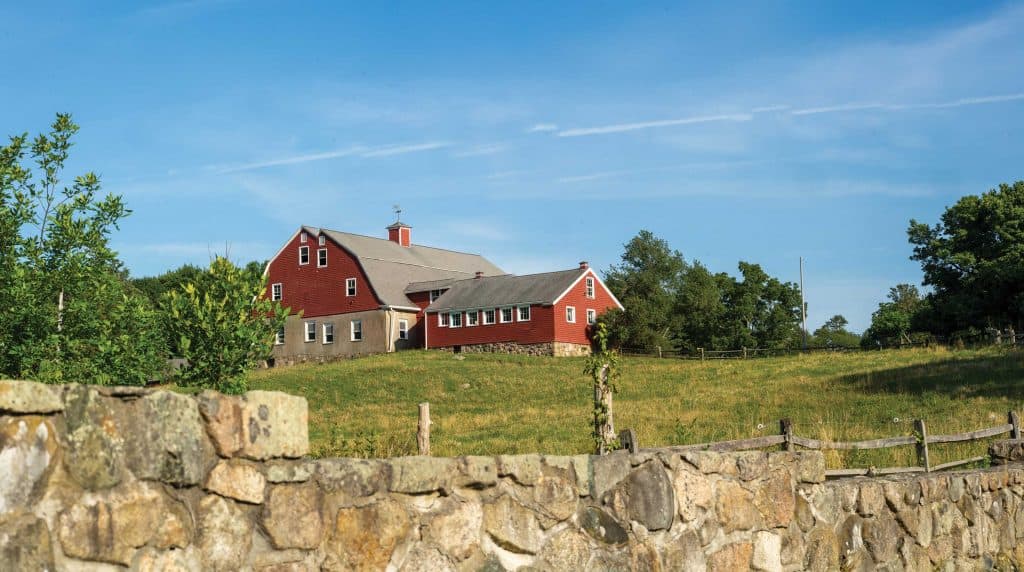An acclaimed artist and ‘quiet philanthropist’ helped preserve the natural beauty of a bucolic Hingham hilltop.
Written by Jennifer H. McInerney
|Photography by Jack Foley
Throughout her 101 years of life, Hingham artist Polly Thayer Starr reveled in the natural beauty of her family’s homestead on Turkey Hill and the adjacent Weir River Farm. During her childhood, she raced her siblings barefoot down the hill to the barn, rode the family’s horses, played in the hayloft, and became close companions with the piglets—which Starr described in her own “Recollections of Weir River Farm” as “irresistible.” She learned to milk the cows, waded and swam in the dammed river, and tickled the backs of frogs with timothy grass.
“There was no end to the variety of engrossing activities that farm life provided for a child,” she wrote. “The ritual of the ducks emerging from the duck-house to waddle in single file down the hill and launch into the river in the morning, returning in formation as punctually at dusk, was one I hated to miss.”
When in need of a rest, Starr would retreat to the solace of a favorite arbor at the end of a garden. “It was bliss to lie in a murmurous bed of white clematis tremulous with bees, buzzing ecstatically as they do when hard at work in the full sunlight, with the protective grace of a blue sky above them,” Starr observed.
![Polly-Thayer-Starr-by-Steven-Trefonides-[her-favorite-photo]--Sdrive-160 Polly-Thayer-Starr-by-Steven-Trefonides-[her-favorite-photo]--Sdrive-160](https://southshorehomelifeandstyle.com/wp-content/uploads/2020/10/Polly-Thayer-Starr-by-Steven-Trefonides-her-favorite-photo-Sdrive-160.jpg)
Her vivid appreciation of nature’s bounty served her well as she developed into a fine artist and, especially, later in her career when she began to study more closely the details of the insects and flowering plants that inhabited her own gardens on Turkey Hill. Her portfolio of paintings includes renderings of cyclamen, gladiola, irises, thistles, lady slippers, zinnias and poppies, as well as bees and dragonflies.
Today, the house and gardens have come full circle. As they provided delight and solace during Starr’s lifetime, they continue to bestow a serene setting for people living out their final days in the comfort of what is now the Pat Roche Hospice Home. The family homestead and surrounding acreage stand as a testament to Starr’s inspired career and her giving nature.
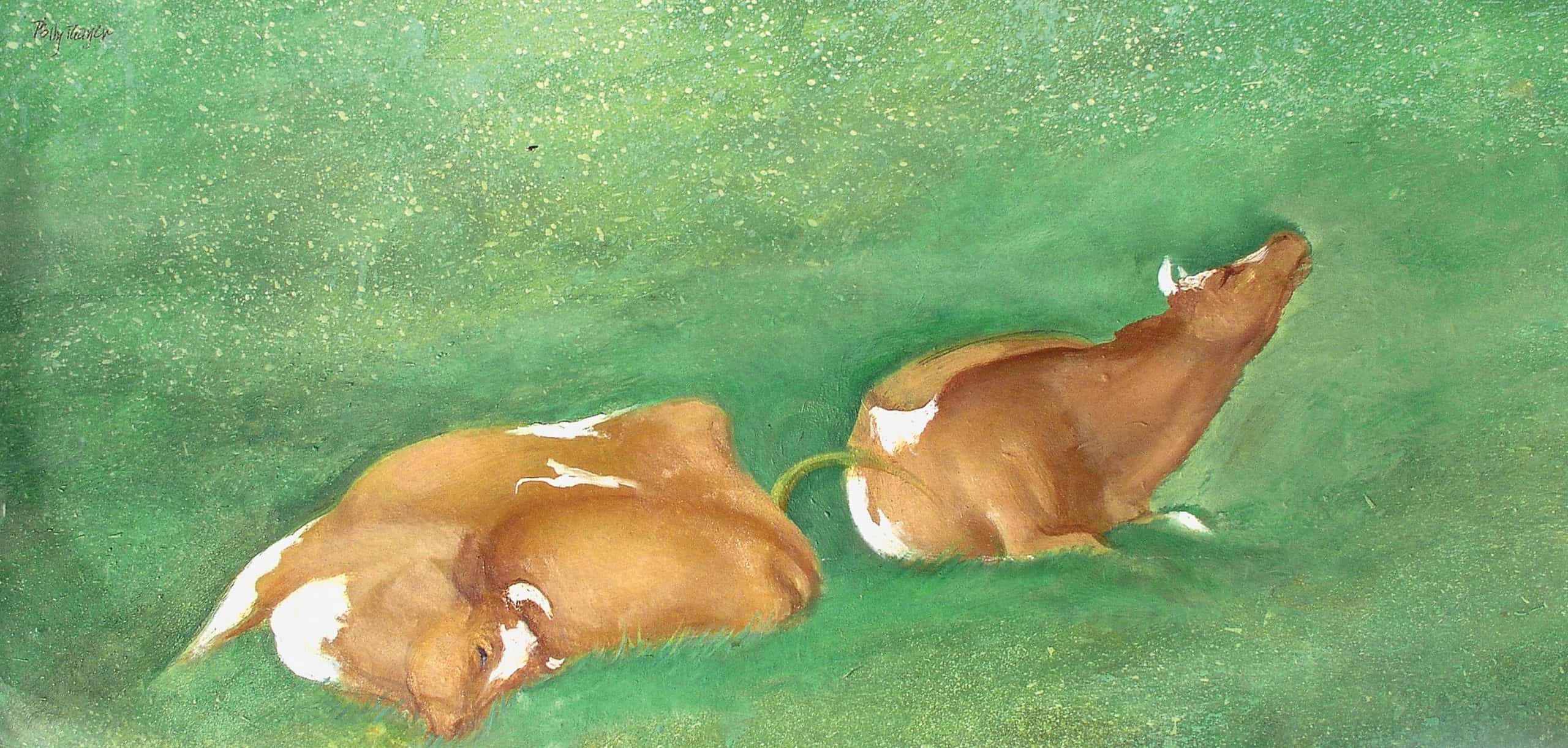

An Artistic Career Spanning a Century
From an early age, Starr took an in interest—and showed real promise—in art. Noting her talent, her mother signed her daughter up for art lessons with a recent graduate of the Museum of Fine Arts’ Museum School. After graduating from the Westover Boarding School in Connecticut, Starr enrolled in the School of Painting at the Museum of Fine Arts and quickly became a stand-out student of the Boston Style of painting.
From there, she spent several years traveling, studying at the Académie Colarossi in Paris and with architect Rose Nichols in Italy. In 1929, her painting “Circles” received the First Hallgarten Prize from the National Academy of Design in New York. She continued her studies in Spain and, again, in Paris, becoming ever-more enthralled by the artistic process. In a 1930 letter to her future husband, Boston attorney Donald Starr, she wrote, “Art, as I never dreamed it could be, is a daily and vital interest—it is more important than business, than politics, than eating, even!”
That same year, her self-portrait “Interval” won a gold medal from the Boston Tercentenary Exhibition, and her first solo exhibition opened at Doll and Richards Gallery in Boston. These coinciding successes earned her a solid reputation—and a great many commissions—for portraiture. But Starr would prove to be an artist of unlimited versatility, expanding her focus to include landscapes and, ultimately, with the aid of jeweler’s loupe, the elaborate intricacies of nature’s blossoming and buzzing specimens.
Throughout her adulthood, she had countless shows of her work, including four at the Vose Galleries in Boston. In honor of her 100th birthday in 2001, the gallery staged a Centennial Exhibition of 100 works spanning her career. In an essay, friend and colleague Dorothy Koval described Starr’s works as “inhabit(ing) the provocative borderland between the known and the unknown, the carefully observed and the audaciously extrapolated, the ‘real’ and the abstract.”
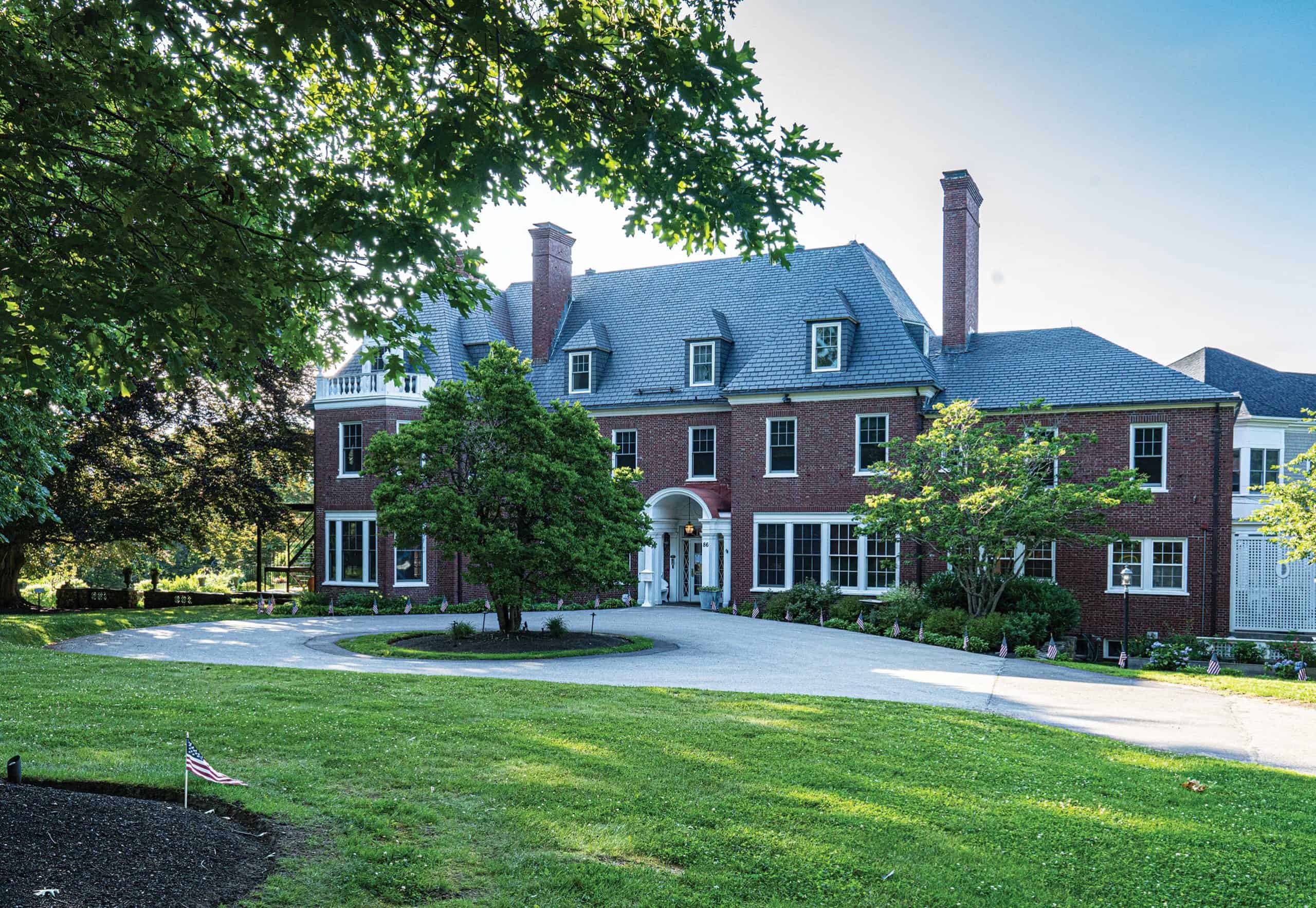
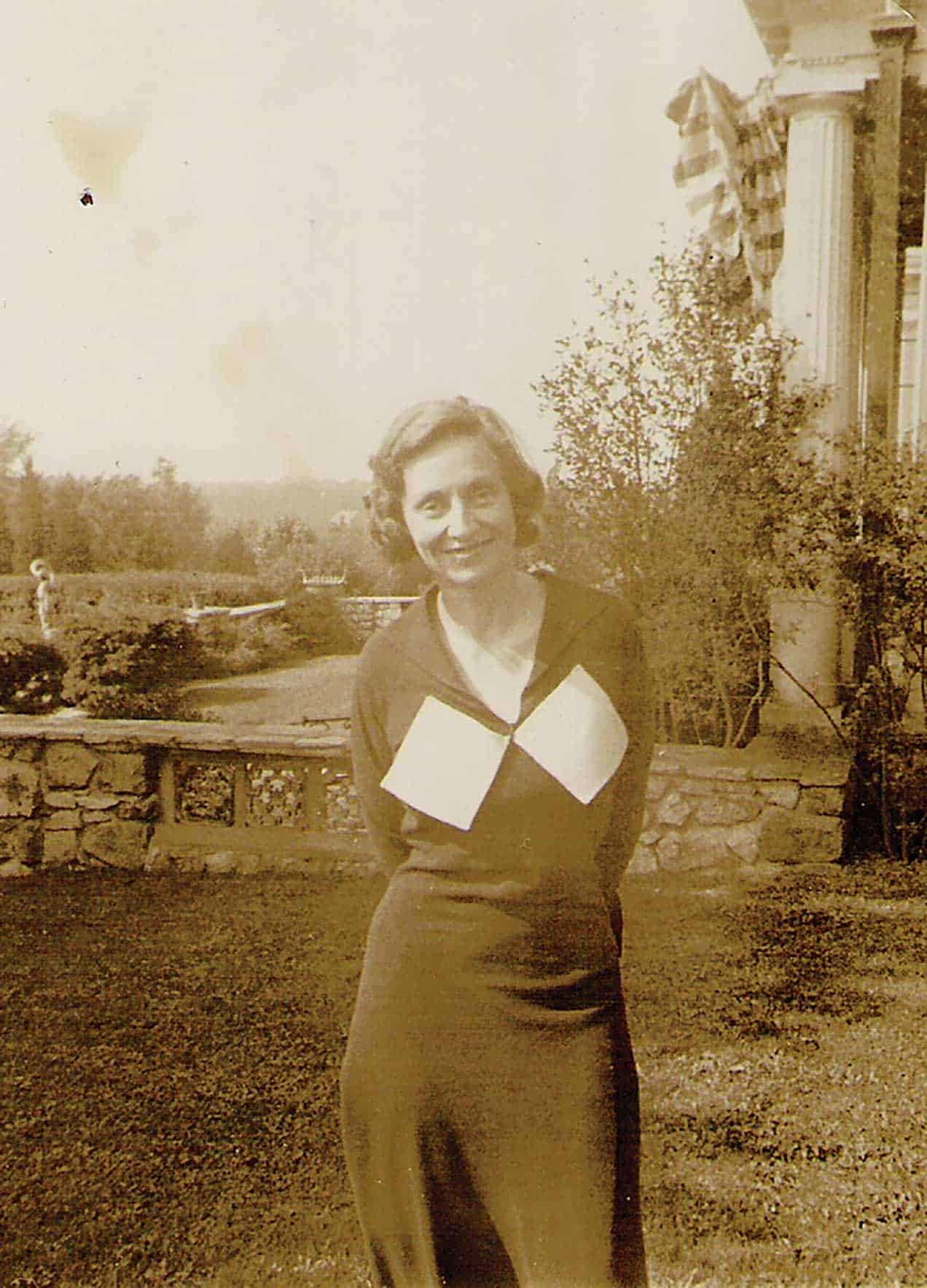
A ‘Quiet Philanthropist’
During her thriving career as an artist, and while raising two daughters, Starr also became involved with the Society of Friends, also known as Quakers. In the late 1950s, Starr learned that the New England Yearly Meeting of Friends were struggling to keep their Huntington Home in Amesbury, which had served as a rest home for the elderly since 1904. Following the death of her mother in 1959, Starr donated the home on Turkey Hill to the Friends, enabling them to continue to care for people in need.
Over the next three years, the Friends renovated the home, increasing the number of bedrooms to 10 and expanding the kitchen. They also added the necessary components to comply with building codes: fire escapes, sprinklers, and an alarm system. The new home opened its doors to its first residents in 1962.
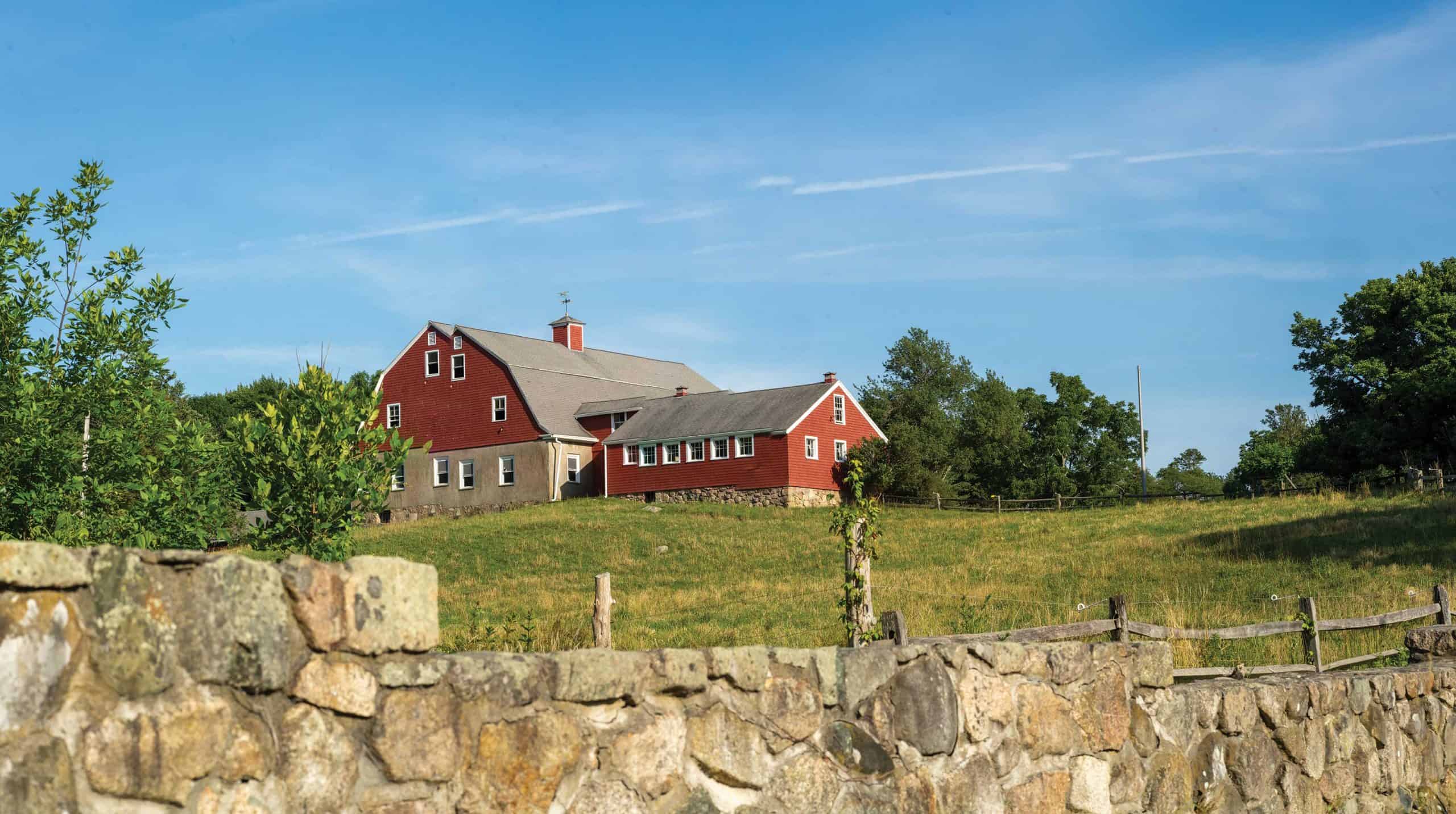
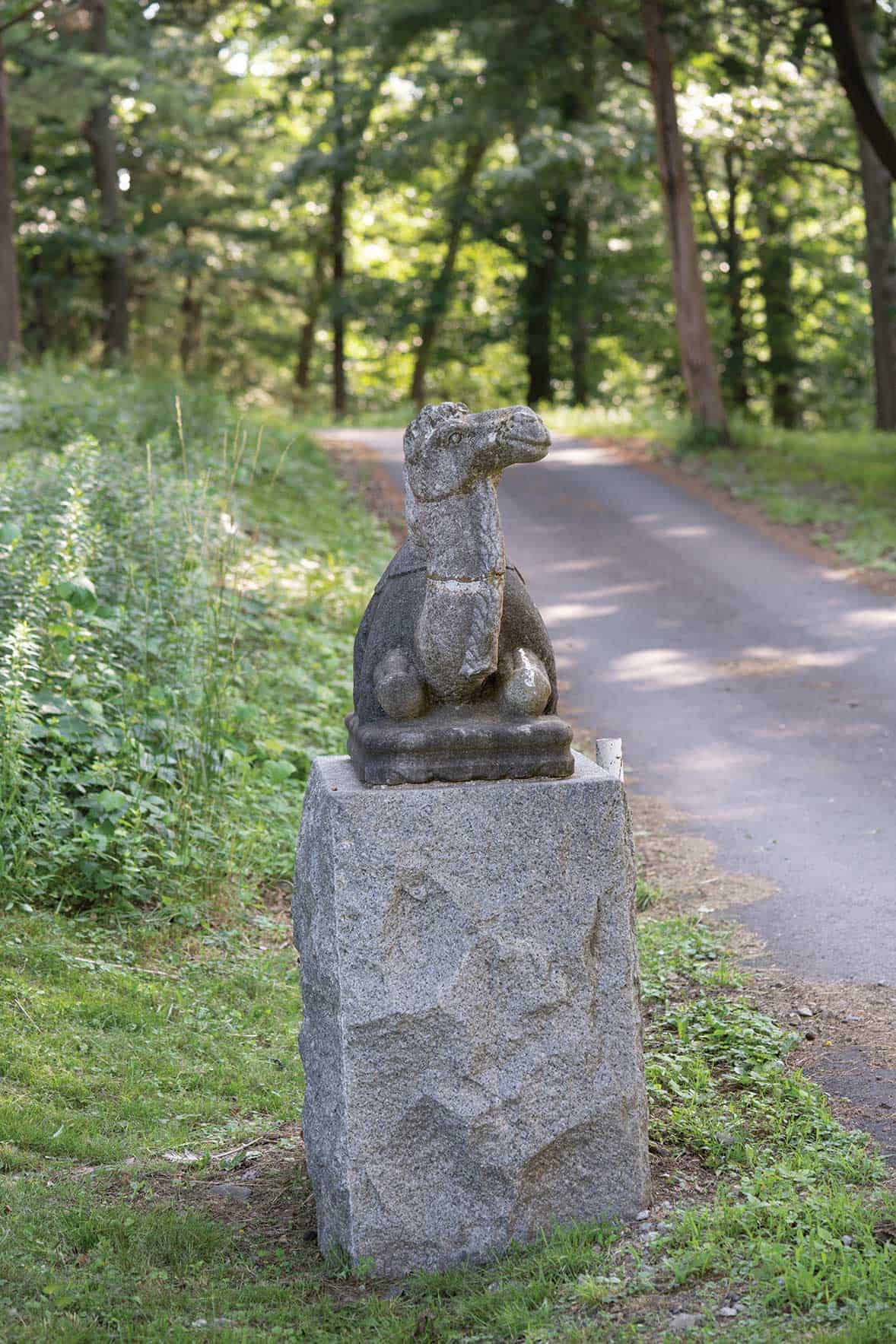
During her thriving career as an artist, and while raising two daughters, Starr also became involved with the Society of Friends, also known as Quakers. In the late 1950s, Starr learned that the New England Yearly Meeting of Friends were struggling to keep their Huntington Home in Amesbury, which had served as a rest home for the elderly since 1904. Following the death of her mother in 1959, Starr donated the home on Turkey Hill to the Friends, enabling them to continue to care for people in need.
Over the next three years, the Friends renovated the home, increasing the number of bedrooms to 10 and expanding the kitchen. They also added the necessary components to comply with building codes: fire escapes, sprinklers, and an alarm system. The new home opened its doors to its first residents in 1962.
In 1998, the Friends decided to expand the house further with a building addition that would give each resident a private bath. At the same time, they took the steps needed to convert the new 18-unit, 16,781-square-foot residence into a licensed assisted living facility.
The following year, Starr donated the adjacent 75-acre Weir River Farm—which had belonged to her family for 100 years—to the Trustees of Reservations, a nonprofit land conservation and historic preservation organization, to preserve the farmland in perpetuity. Together, the stately rest home and the sprawling natural acreage created a grand and inviting prospect for residents, staff, and visitors alike.
At the age of 101, Starr died in 2006. Five years later, the Friends closed the home on Turkey Hill, which was then purchased by Norwell-based NVNA and Hospice, in partnership with Campus for Caring.
In 2013, after extensive renovations, the residence reopened as the Pat Roche Hospice Home on Turkey Hill, an independent nonprofit facility that provides end-of-life care to ailing residents.
The Pat Roche Hospice Home strives to be the “next best thing to home” with 12 private rooms with bathrooms, as well as a library, tea room, family room with full kitchen, and outside porch—common areas designed for gathering comfortably with family and loved ones.
Given her mother’s legacy of caring for others, Starr’s surviving daughter, Dinah, reflects: “I know her heart would be gladdened if she knew that her childhood home is now host to the merciful institution which is the Pat Roche Hospice Home.”
The sizable gifts of the house and the property to two nonprofit organizations clearly demonstrate Starr’s uncommon generosity to her community. To this end, her colleagues Marcia L. Vose, Abbot W. Vose, and Robert C. Vose, of the Vose Galleries in Boston, referred to Starr as a “quiet philanthropist” whose munificence benefited “innumerable charitable and humanitarian causes” during her remarkable lifetime.
Continuing her quiet philanthropy, Starr’s estate endowed the Polly Thayer Starr Charitable Trust “to permanently further her artistic legacy and to enhance the appreciation and knowledge of other artists whose works are reflective of her life and interests.”
Starr's artwork will continue to inspire while supporting the important work of the Trustees of Reservations in an exhibition titled, “Polly Thayer Starr: Nearer the Essence” at the Fruitlands Museum in Harvard, Massachusetts. On view until March 2021, the exhibit features an array of her paintings of nature, portraits and “never-before-seen archival materials” from her long and prolific career. To learn more, visit pollythayerstarr.org.

